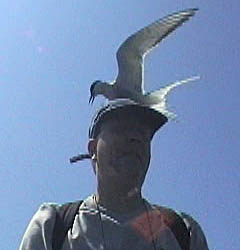Last year I had a good moan about the summer weather. I know this year has been pretty wet too, but from my perspective the weekends have been better, and the rain has largely been more showery than continuous.
Slimbridge isn't the best place for photography. Most of the hides are a bit distant from the birds, or face into the sun for large parts of the day, but the hides on the Holden walkway are a better bet. The aim yesterday was to try for some pics of green sandpiper, but only one was on the pool, and for a long time it seemed happy to wander the far banks. There was a brief flurry of excitement when it took to the air and headed broadly in our direction, but it came down to a small island, well out, and had a preen. And then a stand.

Then it flew back to the far bank.
Eventually it strolled across the shallow water to the channel in front of the hide. The barbed wire fence did cause some problems (I ask you - why a barbed wire fence across the nearest water to the hide?), but the cloud even more. This could have been a lovely close up. As it is no amount of tweaking can give it that sunshine glow.
 Of course after it walked away again the sun appeared enabling a shot of .............. the black-tailed godwits. At first I thought this one was exercising, but then, as the cloud cover rolled back in, I realised it was doing a rain dance.
Of course after it walked away again the sun appeared enabling a shot of .............. the black-tailed godwits. At first I thought this one was exercising, but then, as the cloud cover rolled back in, I realised it was doing a rain dance. Sun

Cloud

But, good things come to those who wait (and I can assure you we waited). The green sandpiper did reappear, and in some sun. In my eagerness I didn't even let it clear the reeds before I was grabbing some shots (the BTG was still dancing you see - get something in the can). Then a second appeared, but you can only focus on one at a time!



 As always a few better quality versions and a few more pics in the 'latest pictures' web album HERE
As always a few better quality versions and a few more pics in the 'latest pictures' web album HERE








 Common blue
Common blue




 Speckled wood
Speckled wood






 Harvestman
Harvestman








 But ............ they've all fledged now, and walking past the woods the other day I was thrilled to see this bird in an oak tree. Brilliant.
But ............ they've all fledged now, and walking past the woods the other day I was thrilled to see this bird in an oak tree. Brilliant. Rich has put up some more
Rich has put up some more 























 Scaeva pyrastri
Scaeva pyrastri 










 In many ways it's not fair to talk of dreams here, because he and Nic have done it. No doubt there is more to come over the next few years - perhaps even realising the wider dream of a network of similar 'micro-reserves'. Hell it's even got Kay and I talking about doing something, although we can be better at the talking than the doing!
In many ways it's not fair to talk of dreams here, because he and Nic have done it. No doubt there is more to come over the next few years - perhaps even realising the wider dream of a network of similar 'micro-reserves'. Hell it's even got Kay and I talking about doing something, although we can be better at the talking than the doing! 











